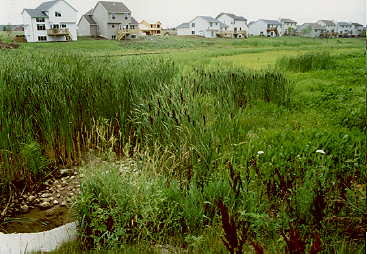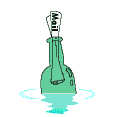Rain Gardens

A rain garden drainage system in Caledonia created a wetland common area. It will attract wildlife and provide and interesting and beautiful views for the residents to enjoy, enhancing both quality of life and property values. Stormwater is filtered in the wetland vegetation in the basin before release to groundwater and to Emmons Creek.
Rain gardens are areas created to allow community rain water drainage to discharge to groundwater. This is a desirable alternative to overloading storm sewers with huge volumes of rain run-off. In a traditional stormwater system, rainwater goes directly into a local stream, carrying a load of fertilizer, pesticides, oil, gas, and other pollutants. A rain garden (bio-retention pond) can be constructed to naturally remove most of the pollutants from stormwater run-off.
Rain gardens are either left to evolve in a natural wild condition, or can be planted with attractive, moisture-loving wildflowers, shrubs, and trees. Some of our most beautiful natural wildflowers will thrive if planted in a rain garden.
Any rain garden, large or small, will enhance the landscape
and help to reduce storm water processing costs, in addition to protecting surface water quality. A rain garden planted with native species will have additional value as wildlife habitat.
If I am online, you can
click the image link below
and talk to me directly,
or send me an email. Try it!
Here are a number of online resources for more information on creating a rain garden.
Thornapple Issues


